Recent Posts
Tips for preventing corrosion after a fire
12/4/2024 (Permalink)
A fire can leave more than just visible damage behind. Even after the flames are extinguished, the risk of corrosion continues to threaten the structural integrity of your property. Corrosion, caused by the interaction of fire residues, soot, and moisture, can compromise metal surfaces, electrical systems, and even appliances. Preventing corrosion after a fire is essential for maintaining the safety and longevity of your property. Here are expert tips on how to prevent corrosion in the aftermath of a fire.
Assess the Damage and Act Quickly
Time is of the essence after a fire. Corrosion can begin within hours of the fire being extinguished, so it’s crucial to assess the damage and take action as soon as possible. According to the National Fire Protection Association (NFPA), immediate response to fire damage can prevent up to 70% of long-term damage to property. If possible, consult with fire restoration professionals to determine the extent of damage and develop an action plan for preventing corrosion.
Clean and Neutralize Residues
Soot and fire residues are highly acidic and can accelerate corrosion on metal surfaces. Cleaning these surfaces thoroughly is the first step in corrosion prevention. Use a soft cloth or sponge to wipe away visible soot and ash, and then apply a neutralizing solution designed for post-fire cleaning. Be sure to avoid abrasive materials that could scratch or damage surfaces further. Proper cleaning will help remove the acidic residues that promote corrosion.
Control Moisture Levels
Moisture combined with soot and fire residues creates a perfect environment for corrosion to develop. To reduce the risk of corrosion, it's important to control the humidity and moisture levels in the affected area. Consider using dehumidifiers or industrial fans to dry the space quickly. Additionally, avoid using water when cleaning metal surfaces, as it can accelerate rusting and corrosion.
Protect Metal Surfaces with Corrosion Inhibitors
Once surfaces are cleaned and dried, applying a corrosion inhibitor can provide added protection. Corrosion inhibitors form a protective layer that shields metal surfaces from the acidic elements left behind after a fire. These inhibitors are particularly effective on appliances, HVAC systems, and metal structures. Be sure to follow the manufacturer’s instructions when applying these products.
Create a Post-Fire Restoration Checklist
To ensure thorough protection, here’s a checklist of actions to take after a fire to prevent corrosion:
- Inspect and assess metal surfaces and appliances for visible damage
- Wipe down surfaces to remove soot and fire residues
- Use dehumidifiers to control moisture in the affected area
- Apply corrosion inhibitors to all metal surfaces
- Consult fire restoration professionals for further assistance
By following these expert tips, you can minimize the risk of corrosion after a fire and protect your property from further damage. For professional fire damage restoration and corrosion prevention, trust the experienced team at SERVPRO® of South Orlando. We’re here to help you restore your property efficiently and effectively.
DIY Mold Removal: When to Call the Professionals
11/13/2024 (Permalink)
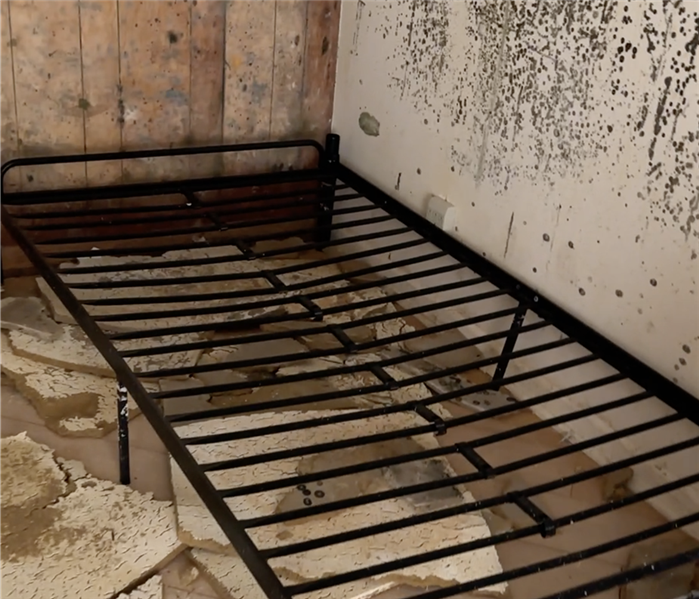 By calling in a trusted professional team, you ensure a thorough and safe removal process, giving you peace of mind.
By calling in a trusted professional team, you ensure a thorough and safe removal process, giving you peace of mind.
Mold growth in your home can be a frustrating and persistent issue. While DIY mold removal can sometimes be effective for small areas, there are situations where calling in the professionals is essential. Understanding when it’s time to seek expert help can save you time, effort, and protect the structural integrity of your home. Here’s a guide on when to tackle mold removal yourself and when to contact professionals like SERVPRO of South Orlando for assistance.
When Can You Handle Mold Removal Yourself?
There are certain situations where DIY mold removal can be effective. If the mold covers less than 10 square feet, the EPA suggests that homeowners can handle it themselves using soap, water, and a commercial mold cleaner. Common areas where you may find mold include bathrooms, basements, and around windows, particularly in humid climates like South Orlando.
To tackle small mold problems, follow these simple steps:
- Identify and fix the source of moisture
- Scrub the moldy surface with soap and water
- Allow the area to dry completely
- Use a mold-resistant paint or sealant to prevent future growth
DIY solutions work best for non-porous surfaces such as tiles, glass, and metal. However, even small amounts of mold on porous materials like drywall or wood may require professional intervention due to their ability to absorb and spread mold spores.
When to Call the Professionals
While DIY solutions can be effective for minor mold issues, larger infestations or hidden mold problems should always be handled by professionals. According to the U.S. Environmental Protection Agency (EPA), if the mold covers an area greater than 10 square feet or has spread into your HVAC system, it's time to call in a certified mold remediation expert.
Here are key indicators it’s time to contact professionals:
- The mold growth covers a large area (more than 10 square feet)
- Mold is present inside walls or ceilings
- Water damage or flooding caused the mold
- Mold keeps returning after DIY attempts
Why Choose Professional Mold Remediation?
Professional mold remediation companies like SERVPRO of South Orlando have the expertise and tools to handle even the most complex mold problems. Professionals use advanced equipment such as air scrubbers and HEPA vacuums to ensure all mold spores are eliminated. Additionally, they can help identify the source of moisture, preventing the mold from returning. SERVPRO® also adheres to industry standards, ensuring your home is treated safely and effectively.
When it comes to large or recurring mold issues, attempting DIY solutions can lead to more damage and stress. By calling in a trusted professional team, you ensure a thorough and safe removal process, giving you peace of mind.
For mold issues big or small, SERVPRO of South Orlando is here to help! Contact us today for expert mold remediation services.
Essential Water Damage Restoration Terms: Your Glossary for SERVPRO Services
10/16/2024 (Permalink)
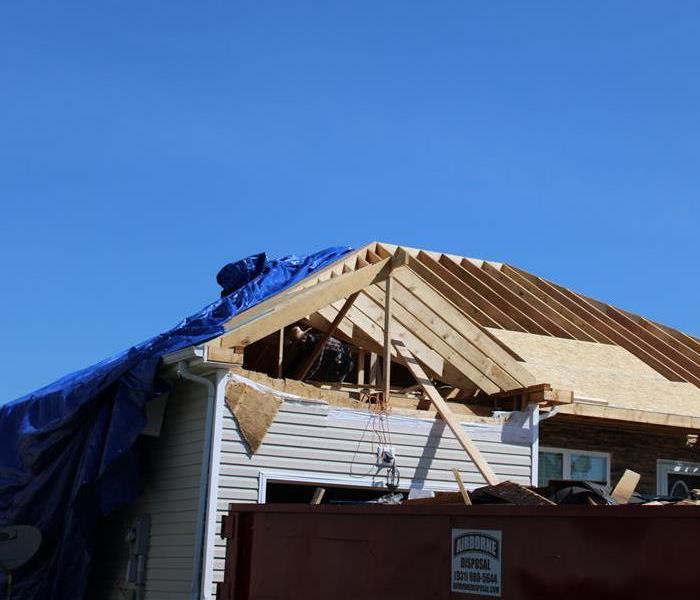 Whether you're facing water damage in your home or business, knowing the language of restoration can empower you to make informed decisions.
Whether you're facing water damage in your home or business, knowing the language of restoration can empower you to make informed decisions.
When it comes to water damage restoration in Tampa, FL, understanding the terminology is key to navigating the recovery process effectively. This glossary of essential terms will help you better comprehend the services, techniques, and strategies used by professionals like SERVPRO®. Whether you're facing water damage in your home or business, knowing the language of restoration can empower you to make informed decisions.
What Is Water Damage Restoration?
Water damage restoration is the process of cleaning, drying, and repairing a property after water damage occurs. This process involves multiple steps, including water extraction, dehumidification, and reconstruction, to return the property to its pre-damage condition. SERVPRO’s trained professionals use state-of-the-art equipment and techniques to ensure effective water damage restoration, minimizing the risk of further issues.
According to the Insurance Information Institute, water damage accounts for nearly 28 percent of all homeowners insurance claims. This statistic highlights the prevalence of water damage and the importance of prompt and professional restoration services.
Key Water Damage Restoration Terms You Need to Know
1. Water Mitigation
Water mitigation is the initial process of preventing further water damage after a flood, leak, or other type of water intrusion. This involves removing water from the property, securing the area, and stopping the spread of moisture to avoid additional damage. Mitigation is a critical first step before full restoration can take place.
2. Water Extraction
Water extraction refers to the removal of standing water from a property. This process typically involves the use of high-powered pumps, vacuums, and specialized equipment to remove water as quickly as possible. Immediate extraction is essential to prevent mold growth, structural damage, and further complications.
3. Dehumidification
Once water is extracted, dehumidification helps remove excess moisture from the air and building materials. Industrial-grade dehumidifiers and air movers are used to accelerate the drying process. Proper dehumidification prevents the growth of mold and bacteria, ensuring a safer environment.
4. Moisture Mapping
Moisture mapping involves using specialized tools like moisture meters and thermal imaging cameras to locate areas of hidden moisture. These tools are vital for ensuring that all areas of a property are thoroughly dried, even those that might not be immediately visible to the naked eye.
5. Category of Water
In the restoration industry, water is classified into three categories based on its contamination level:
- Category 1 (Clean Water): Water from a clean source, such as a broken water supply line or a faucet leak.
- Category 2 (Gray Water): Water that may contain some contaminants, such as water from dishwashers, washing machines, or sump pumps.
- Category 3 (Black Water): Highly contaminated water, often from sewage backups, flooding from rivers or streams, or standing water that has begun to grow bacteria.
Understanding these categories helps determine the appropriate restoration strategy and safety measures.
6. Drying Goals
Drying goals are established benchmarks for restoring the moisture levels of affected materials to their pre-damage state. These goals are based on industry standards and are critical for preventing long-term damage. Technicians use moisture meters to monitor progress and ensure the property is thoroughly dried before declaring the job complete.
7. Hydrostatic Pressure
Hydrostatic pressure occurs when water builds up around the foundation of a building, exerting pressure on the walls and potentially causing cracks, leaks, and structural damage. This pressure can result from heavy rain, poor drainage, or flooding, and addressing it often involves waterproofing and other preventative measures.
8. Structural Drying
Structural drying is the process of thoroughly drying the structural elements of a building, such as walls, floors, and ceilings. This is done using specialized drying equipment, and it is essential for preventing long-term damage like wood rot or warping.
9. Air Movers
Air movers are powerful fans used to increase air circulation and speed up the drying process. By placing air movers strategically around the property, restoration professionals can direct airflow across surfaces to evaporate moisture more quickly.
10. Subfloor Drying
Water can seep into subfloors, which are the layers of flooring beneath the visible surface. Subfloor drying involves using specialized equipment to ensure that moisture is removed from these hidden areas, preventing mold growth and damage to the structure.
Why Understanding Water Damage Restoration Terms Matters
Familiarizing yourself with these key water damage restoration terms can make the recovery process smoother and less stressful. By understanding what professionals like SERVPRO are doing, you can ask the right questions, understand the process, and be confident that your property is being restored effectively and efficiently.
For expert water damage restoration services, SERVPRO's team is Here to Help®, utilizing these methods and more to restore your property. With the knowledge of these terms, you are better equipped to partner with restoration professionals and get your home or business back to normal as quickly as possible.
Whether you're dealing with a small leak or extensive flooding, SERVPRO’s expertise ensures that you receive high-quality restoration services tailored to your specific needs.
Tips for Securing Your Property Before a Storm Hits
9/11/2024 (Permalink)
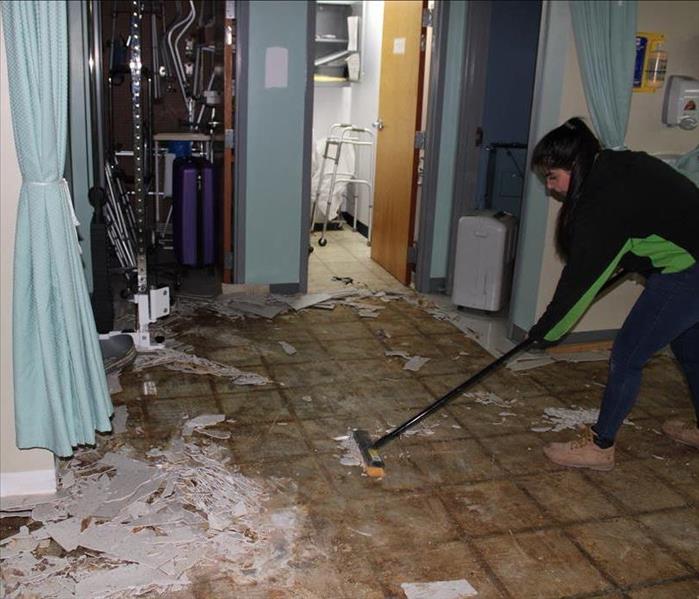 At SERVPRO, we understand the importance of preparation and are here to assist you in any way we can.
At SERVPRO, we understand the importance of preparation and are here to assist you in any way we can.
At SERVPRO®, we understand the importance of taking proactive measures to secure your property before a storm hits. Ensuring your home or business is prepared for severe weather can significantly reduce potential damage and make the recovery process smoother. Here are some essential tips to help you safeguard your property against the destructive forces of nature.
Roof
First and foremost, it’s crucial to inspect your roof. Check for any loose or missing shingles and ensure that all flashing is securely in place. A well-maintained roof is your first line of defense against heavy rain and high winds. Additionally, clean out your gutters and downspouts to prevent water from pooling on your roof, which can lead to leaks and water damage.
Windows
Next, focus on your windows and doors. Installing storm shutters is one of the most effective ways to protect windows from breaking during a storm. If storm shutters are not an option, you can use plywood to cover your windows. Ensure that all doors, including garage doors, are properly secured. Reinforcing your garage door with braces can prevent it from being blown in by strong winds.
Outdoor furniture
Outdoor objects can become dangerous projectiles during a storm. Secure or bring inside any outdoor furniture, garden tools, and decorations. Trampolines, grills, and playsets should also be anchored or stored in a safe place. Additionally, trim any trees or branches that could fall on your property. Regular maintenance of your landscaping can prevent significant damage to your home or business during a storm.
Inspect your property for any items that could become airborne in high winds. Items such as trash cans, bicycles, and lawn equipment should be stored in a garage or shed. If you have a pool, remove any loose accessories and secure the cover. Anchoring these items can prevent them from causing damage to your property or your neighbor’s property.
Reinforcements
Consider reinforcing your home’s structure. Installing hurricane straps or clips can help hold the roof to the walls and the walls to the foundation. This added structural support can make a significant difference during a severe storm. If you live in an area prone to flooding, consider installing flood barriers or sandbags around your property to prevent water from entering your home or business.
Emergency plan
Finally, create an emergency plan and ensure all family members or employees are aware of it. Know the evacuation routes and have a designated meeting place. Keep important documents in a waterproof container and have an emergency kit ready with essentials such as water, non-perishable food, flashlights, batteries, and a first aid kit.
By taking these proactive steps, you can help secure your property and minimize storm damage. At SERVPRO, we understand the importance of preparation and are here to assist you in any way we can. If you need help assessing your property’s storm readiness or require post-storm restoration services, don’t hesitate to contact us. We’re dedicated to helping you protect what matters most.
Top 5 Things That Should Be Replaced, Not Cleaned, After Fire Damage
8/14/2024 (Permalink)
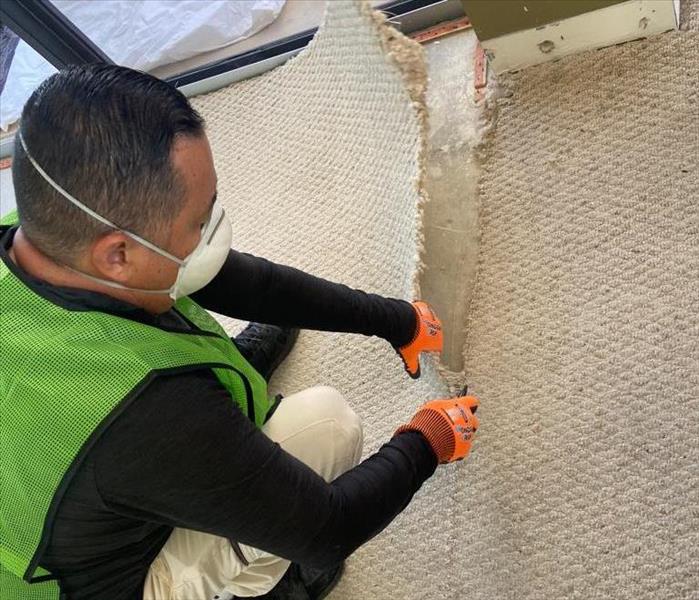 For more tips and information on fire damage restoration, visit our website or give us a call.
For more tips and information on fire damage restoration, visit our website or give us a call.
When a fire strikes, the aftermath can be overwhelming. While some items can be cleaned and salvaged, there are certain things that should always be replaced to ensure safety and restore peace of mind. As a trusted restoration company, SERVPRO® is here to guide you through the recovery process. Here are the top five things that should be replaced, not cleaned, after fire damage.
1. Electrical Wiring and Components
Fire can cause severe damage to electrical wiring and components. Even if the wiring appears intact, the heat from the fire can weaken insulation and damage the internal structure. This creates a significant fire hazard. Replacing all affected electrical wiring and components is crucial to prevent future electrical fires and ensure the safety of your home.
2. Insulation
Insulation materials, such as fiberglass or cellulose, can absorb smoke and soot, making it nearly impossible to clean thoroughly. The absorbed contaminants can cause lingering odors and potentially harmful off-gassing. Removing and replacing insulation in fire-damaged areas is essential to restore air quality and energy efficiency.
3. Drywall and Plaster
Drywall and plaster can become compromised by the heat and smoke of a fire. Smoke can penetrate deep into the material, making it difficult to eliminate odors and contaminants. Additionally, water used to extinguish the fire can cause mold growth behind the walls. Replacing affected drywall and plaster ensures that any hidden damage is addressed and prevents future structural issues.
4. Carpets and Rugs
Carpets and rugs are particularly susceptible to smoke and soot damage. These materials can trap contaminants, making it challenging to restore them to their original condition. Even professional cleaning may not fully remove the odors and toxins embedded in the fibers. For your safety and comfort, replacing carpets and rugs in fire-damaged areas is often the best option.
5. Upholstered Furniture
Upholstered furniture, such as sofas and chairs, can absorb smoke, soot, and water, making it difficult to clean effectively. The padding and fabric can harbor contaminants, leading to persistent odors and potential health risks. Replacing fire-damaged upholstered furniture ensures that your living environment is safe and comfortable.
Dealing with fire damage is never easy, but knowing which items should be replaced rather than cleaned can help streamline the recovery process. At SERVPRO, our experienced team is dedicated to helping you restore your home to its pre-fire condition. We understand the importance of safety and efficiency in fire damage restoration, and we are here to provide the expert guidance and support you need.
If you've experienced fire damage and need professional assistance, don't hesitate to contact SERVPRO today. Our team is ready to respond 24/7 to help you get back to normal as quickly as possible. Trust us to handle the restoration process with care and expertise.
For more tips and information on fire damage restoration, visit our website or give us a call. We're Here to Help® you every step of the way.
Mold in Schools: Risks and Prevention Measures
7/17/2024 (Permalink)
When it comes to ensuring a safe and conducive learning environment for students, preventing mold growth in schools is crucial. Mold can cause structural damage and lead to costly repairs, disrupting the educational process. At SERVPRO®, we understand the importance of maintaining a clean and safe school environment. In this blog post, we will explore the risks associated with mold in schools and provide effective prevention measures.
Understanding Mold Growth in Schools
Mold is a type of fungus that thrives in damp, warm, and humid environments. Schools, with their complex systems of classrooms, bathrooms, kitchens, and basements, can be particularly vulnerable to mold growth if not properly maintained. Common places where mold can be found include:
- Basements and Crawl Spaces: These areas are prone to moisture accumulation, making them ideal breeding grounds for mold.
- Bathrooms and Locker Rooms: High humidity levels in these areas provide the perfect environment for mold to thrive.
- Kitchens and Cafeterias: Spills and leaks, combined with the warmth from cooking appliances, can lead to mold growth if not promptly addressed.
- Classrooms with Poor Ventilation: Rooms without adequate air circulation can trap moisture, promoting mold development.
Risks of Mold in Schools
While mold itself is a natural part of the environment, its presence in schools can lead to significant problems. Mold can damage building materials, leading to the deterioration of walls, ceilings, and floors. This damage can result in expensive repairs and potential closures of affected areas, disrupting the learning process and school activities. Additionally, mold can impact the integrity of school facilities, causing long-term structural issues.
Prevention Measures
Preventing mold growth in schools involves a proactive approach and regular maintenance. Here are some effective prevention measures:
- Control Humidity Levels: Keep indoor humidity levels below 60%. Use dehumidifiers in areas prone to moisture and ensure proper ventilation in all rooms, especially in bathrooms, kitchens, and locker rooms.
- Fix Leaks Promptly: Address any leaks in roofs, walls, or plumbing systems immediately. Regularly inspect these areas for signs of water damage and repair any issues without delay.
- Improve Ventilation: Ensure that all areas of the school have adequate ventilation. Install exhaust fans in high-moisture areas such as bathrooms and kitchens, and ensure that HVAC systems are functioning correctly and efficiently.
- Regular Inspections and Maintenance: Conduct routine inspections of the school premises to identify and address any signs of mold or moisture problems. Regular maintenance of roofs, plumbing, and HVAC systems is essential to prevent mold growth.
- Clean and Dry Areas Promptly: In the event of spills or water intrusions, clean and dry affected areas immediately. Mold can begin to grow within 24-48 hours, so prompt action is critical.
- Use Mold-Resistant Products: When renovating or constructing new areas, consider using mold-resistant materials such as drywall and paint to reduce the risk of mold growth.
Preventing mold in schools is essential for maintaining a safe and functional learning environment. By implementing these prevention measures and regularly monitoring the school premises, administrators can significantly reduce the risk of mold growth and the associated damage. At SERVPRO, we are committed to helping schools maintain clean and mold-free environments. If you suspect mold in your school, contact us for professional assessment and remediation services. Our team of experts is ready to restore your school to a safe and welcoming space for students and staff.
How to Recover from Water Damage: A Step-by-Step Guide
6/12/2024 (Permalink)
 Once the area is clean and dry, it's time to begin the restoration process.
Once the area is clean and dry, it's time to begin the restoration process.
Water damage can be a stressful and overwhelming experience for homeowners, but knowing how to recover from it effectively can make the process smoother and more manageable. In this guide, we'll walk you through the steps to take to recover from water damage and restore your home to its preloss condition.
Stop the Source
If the water damage is due to a leak or burst pipe, the first step is to stop the source of water. Shut off the main water supply to your home to prevent further flooding and damage. If the water damage is due to a natural disaster or external source, focus on securing the property and minimizing additional water intrusion.
Assess the Damage
The next step in recovering from water damage is to assess the extent of the damage. Take stock of affected areas and items, including walls, floors, furniture, and personal belongings. Identify any safety hazards such as electrical issues or structural damage and prioritize addressing them.
Remove Standing Water
Once the source of water has been stopped, begin removing standing water from the affected areas. Use buckets, mops, or wet vacuums to extract water from floors and surfaces. Open windows and doors to promote airflow and aid in the drying process.
Dry Out the Area
Proper drying is essential to prevent mold growth and further damage. Use fans, dehumidifiers, and air movers to circulate air and speed up the drying process. Thoroughly dry affected areas, including walls, floors, and furniture, to prevent moisture from lingering and causing additional problems.
Clean and Disinfect
After drying out the area, it's important to clean and disinfect surfaces to remove any contaminants and prevent mold growth. Use a mild detergent and water solution to clean affected surfaces, and then apply a disinfectant to kill any remaining bacteria or mold spores.
Restore and Repair
Once the area is clean and dry, it's time to begin the restoration process. Repair or replace damaged materials such as drywall, insulation, flooring, and furniture as needed. Work with professional restoration experts like SERVPRO® to ensure that repairs are done correctly and safely.
Monitor for Mold
Even after water damage has been addressed, it's important to monitor the affected areas for signs of mold growth. Keep an eye out for musty odors, discolored patches on walls or ceilings, or visible mold growth. If mold is present, take steps to address it promptly to prevent further damage and other risks.
Consult with Professionals
Throughout the recovery process, don't hesitate to seek help and guidance from professional restoration experts. Companies like SERVPRO of South Orlando have the experience, expertise, and resources to handle water damage restoration safely and effectively, ensuring that your home is restored to its preloss condition as quickly as possible.
Recovering from water damage can be a challenging process, but by following these steps and working with trusted professionals, you can successfully restore your home and move forward with peace of mind. If you need assistance with water damage restoration, don't hesitate to reach out to our SERVPRO team for help.
Unveiling Hidden Storm Damage: What to Look For
5/16/2024 (Permalink)
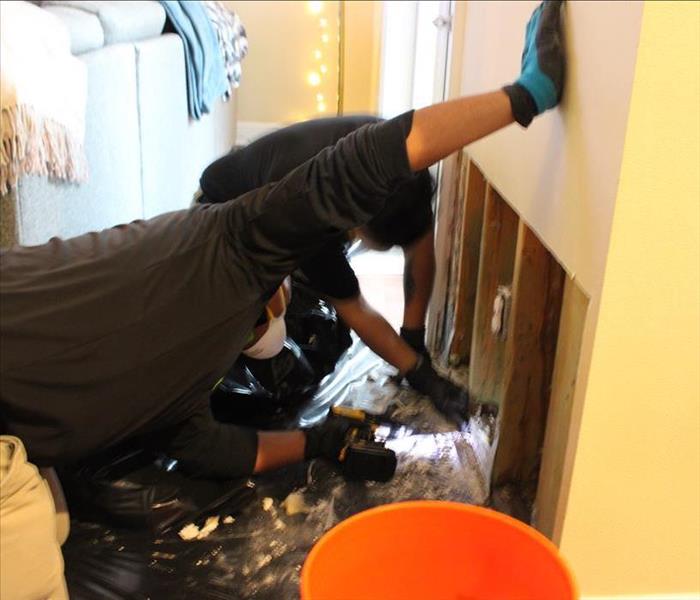 Excess moisture from storm damage can create ideal conditions for mold and mildew growth.
Excess moisture from storm damage can create ideal conditions for mold and mildew growth.
After a severe storm passes through your area, it's essential to assess your property for any signs of damage, both apparent and hidden. While some damage may be obvious, such as broken windows or fallen trees, other issues can lurk beneath the surface and go unnoticed until they become more severe. Here are some key indicators to help you recognize hidden storm damage:
Inspect Your Roof
Start by carefully examining your roof for any signs of damage, such as missing or damaged shingles, cracks, or dents. Pay close attention to areas where different roof surfaces meet, as these are common spots for leaks to develop.
Check Gutters and Downspouts
Gutters and downspouts play a crucial role in directing water away from your home. After a storm, inspect them for clogs, damage, or detachment from the roofline. Improper drainage can lead to water leaks and structural damage over time.
Look for Water Stains
Water stains on ceilings, walls, or around windows can indicate leaks or water intrusion. Even small stains should be investigated further, as they could be a sign of more extensive damage hidden behind the surface.
Examine Exterior Siding
Inspect the exterior siding of your home for cracks, chips, or warping caused by wind or flying debris. Damaged siding can compromise the integrity of your home's envelope and lead to moisture problems if not addressed promptly.
Check for Foundation Issues
Walk around the perimeter of your home and inspect the foundation for any signs of cracks or shifting. Even hairline cracks can indicate underlying structural issues that need to be addressed to prevent further damage.
Assess Landscaping
Fallen branches, uprooted trees, or displaced landscaping elements can pose safety hazards and cause damage to your property. Clear away any debris and assess the health of your trees to prevent potential hazards during future storms.
Monitor for Mold and Mildew
Excess moisture from storm damage can create ideal conditions for mold and mildew growth. Keep an eye out for musty odors, dampness, or visible signs of mold in areas prone to water damage, such as basements, attics, and crawl spaces.
By being vigilant and conducting a thorough inspection of your property after a storm, you can identify hidden damage early and take the necessary steps to address it before it worsens. Remember that safety should always be a priority, so if you're unsure about the extent of the damage or how to address it, don't hesitate to seek professional assistance.
Safe Ash and Debris Cleanup After a Fire
4/15/2024 (Permalink)
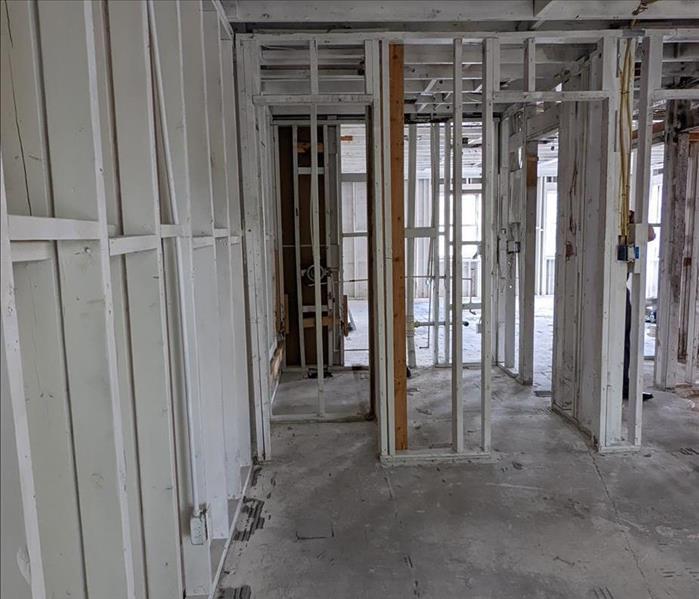 Our trained technicians have the expertise and equipment to safely and effectively clean up and restore fire-damaged buildings.
Our trained technicians have the expertise and equipment to safely and effectively clean up and restore fire-damaged buildings.
When a fire ravages a building, the aftermath can be overwhelming, with ash and debris covering every surface. It's essential to approach the cleanup process with caution and care to ensure safety and thoroughness. In this blog post, we'll provide you with practical tips on how to safely clean up ash and debris from burned buildings, helping you navigate the restoration process with confidence and efficiency.
- Assess the Damage
Before beginning cleanup efforts, assess the extent of the damage to determine the scope of the cleanup and restoration needed. Take note of any structural damage, hazards, or areas of concern that may require professional assistance.
- Protect Yourself
Prioritize safety by wearing appropriate personal protective equipment (PPE), including gloves, goggles, and respiratory protection, to shield yourself from potential hazards such as ash, soot, and airborne contaminants.
- Ventilate the Area
Open windows and doors to promote ventilation and improve air quality within the building. Use fans or air purifiers to help circulate fresh air and remove lingering smoke odors.
- Remove Loose Debris
Begin by carefully removing loose ash and debris from surfaces using a broom, dustpan, or vacuum cleaner equipped with a HEPA filter. Avoid using household vacuums, as they may spread fine particles and contaminants.
- Clean Surfaces
Clean surfaces thoroughly using a mild detergent or cleaning solution and warm water. Use a sponge or cloth to scrub surfaces gently, focusing on areas heavily affected by ash and soot buildup. Rinse with clean water and allow surfaces to air dry.
- Dispose of Debris Properly
Bag and seal ash and debris in sturdy trash bags, double-bagging if necessary, to prevent dust and contaminants from escaping. Dispose of bags in accordance with local regulations and guidelines for handling fire debris.
- Monitor Air Quality
Use air quality monitors to assess indoor air quality and ensure that airborne contaminants are adequately controlled during cleanup. Consider hiring professionals to conduct air quality testing for thorough assessment and peace of mind.
- Seek Professional Assistance
For extensive fire damage or areas that pose safety risks, such as structural instability or hazardous materials, enlist the help of professional restoration experts like SERVPRO of South Orlando. Our trained technicians have the expertise and equipment to safely and effectively clean up and restore fire-damaged buildings.
By following these steps and prioritizing safety, you can navigate the cleanup process effectively and restore your property to a safe and habitable condition after a fire. If you require assistance with fire damage cleanup and restoration, don't hesitate to contact SERVPRO® for prompt and reliable service.
Laborer to Production Operations Manager - Celebrating Success, Mentorship, and Team Spirit at SERVPRO® of South Orlando
12/6/2023 (Permalink)
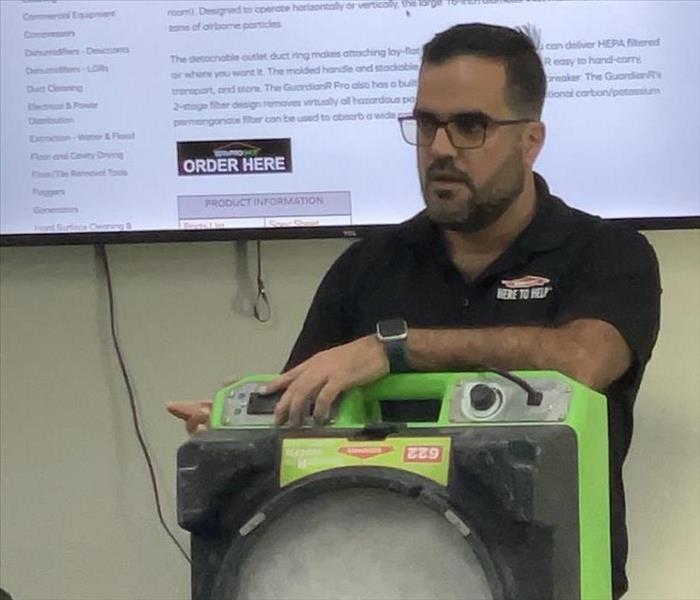 Heydrich Kattar Hernandez training his SERVPRO Team
Heydrich Kattar Hernandez training his SERVPRO Team
In his 2 short years with SERVPRO® Team Nicholson, representing our Orlando location, Heydrich Kattar Hernández has proved endless in zeal, integrity, and a desire for personal and professional development. As we celebrate having Heydrich on board, we not only commemorate his individual successes but also the mentorship and inspiration he offers to our entire team.
In November 2021, Heydrich started with us as a laborer, bringing enthusiasm and an eagerness to learn. His tenure has been marked by significant, quick growth, shaped by his willingness to serve in a variety of roles. He says the diverse experiences—from working on various residential and commercial jobs to the challenges of long hours and extensive travel—have enriched his professional journey.
Now serving as Production Operations Manager within our Training Division, Heydrich continues offering a high standard of service as he uses his passion for making a meaningful impact on our customers’ and employees’ lives. He says, "I've had the privilege of meeting people from all walks of life and contributing to helping others in their homes."
Heydrich embodies the SERVPRO Team Nicholson culture that values knowledge-sharing, encouragement, and opportunity. He says,
“I am sincerely thankful for the belief placed in me, the opportunities to share knowledge, and the continuous support from colleagues who have been mentors and guides. Special appreciation goes to those who have dedicated time to teach, coach, or offer support.“
Heydrich's journey with SERVPRO of South Orlando and SERVPRO Team Nicholson not only marks a personal achievement, but serves as a testament to the power of teamwork and constancy.
Today, Heydrich is excited about the future as he focuses on scouting for talent that aligns with our core values, and continues to help our team grow and improve. Cheers to Heydrich!
Follow the story on our LinkedIn.





 24/7 Emergency Service
24/7 Emergency Service



